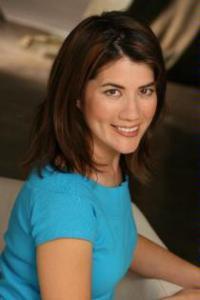People always ask why I spell Kleopatra’s name with a K. In fact, it’s the original Greek spelling. Kleopatra was not Egyptian at all, but the last of a Greek dynasty that ruled Egypt for almost 300 years. The unusual spelling is entirely appropriate: I want people to rethink the very idea of Kleopatra right down to the spelling of her name.
In a recent speech, the esteemed writer Susan Sontag claimed that "the writer’s first job is not to have opinions but to tell the truth . . . and refuse to be an accomplice of lies and misinformation." Not all writers not even those who chronicle history subscribe to Ms. Sontag’s sentiments. Mitigating factors bias, distort and color both history and its characters. Who was in power when the history was written? What was the political orientation of the historian? What were the prejudices of the age? Of all the women distorted by history and myth, Kleopatra is the most vivid example. Far from the seductive, treacherous archetype of feminine evil who lives in the popular imagination, Kleopatra was one of the ancient world’s most brilliant and powerful rulers. She survived blood-curdling family rivalries, single-handedly ruled a rich nation and kept Egypt independent while all its neighboring countries had been annexed to the Roman Empire. She spoke nine languages, patronized art, drama, athletics and the sciences, and had the loyalty of her subjects rare for the members of her dynasty.
The Kleopatra handed to us by history was the victim of a smear campaign by her rival and mortal enemy, Octavian (who became Caesar Augustus). Octavian feared with good reason not only Kleopatra’s power as the Queen of Egypt, but also her influence with Julius Caesar, and later, Mark Antony. But history is written by the winners, and Octavian, in his war against Antony and Kleopatra, won. After her death, he destroyed all written histories favorable to her, and her story was rewritten by his court historians. The more I found out about the historical Kleopatra, the more infuriated I became. Women have virtually no role models who have held Kleopatra’s great power, and I could not accept that the most powerful woman in history, with the possible exceptions of Queens Elizabeth I and Victoria, has been remembered only for the men with whom she slept. The more I learned about the real Kleopatra, the more I raged on to friends and anyone who would listen. Finally, a fellow writer—perhaps tired of hearing the diatribe—suggested that I turn my passion into a book.
I enrolled in an inter-disciplinary graduate program at Vanderbilt University where I could study with classicists, historians and women’s studies scholars. I traveled to Egypt, Greece, Turkey and Rome, walking in Kleopatra’s footsteps. I dragged my 60-something mother into the dizzying heat of the Egyptian desert, escorted by a tour guide and a truckload of men with machine guns! At the outset, I had no idea what it was going to take to write this book with integrity, but after nine years, two graduate programs and all my travels, a two-volume novel was born.
In Volume One, Kleopatra, I wanted to tell the becoming of Kleopatra, to chronicle the events and circumstances that went into the making of this towering and fascinating woman. Traditionally, her story begins as she rolls from the legendary carpet, landing at Caesar’s feet. But Kleopatra had an extremely exciting story before she came spinning into Caesar’s life. Volume Two, Pharaoh (due out in August 2002), begins when Kleopatra is thrust into the center of history’s great stage. It’s been both strange and illuminating to spend a decade of my life with someone who has been dead for 2,000 years. But I hope that I’ve contributed to the ongoing dialogue about the ways in which women have been ignored, misinterpreted or discredited by the telling of history. I felt it was time to set the record straight.
Karen Essex’ Kleopatra is being published this month by Warner Books. A journalist who wrote a well-received 1996 biography of pinup legend Bettie Page, Essex lives in California.





























